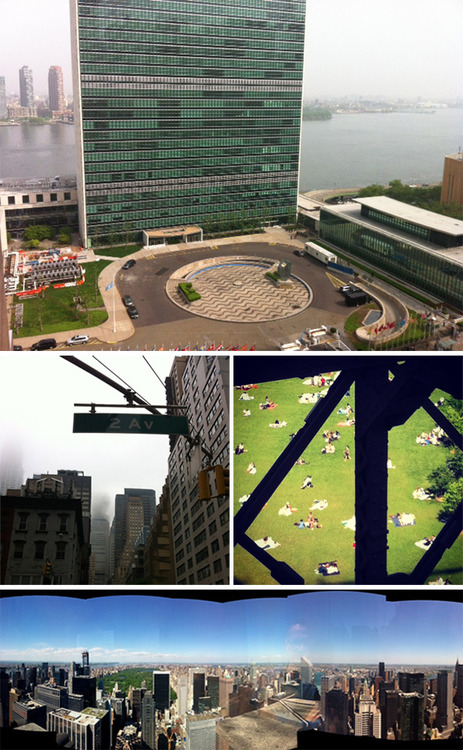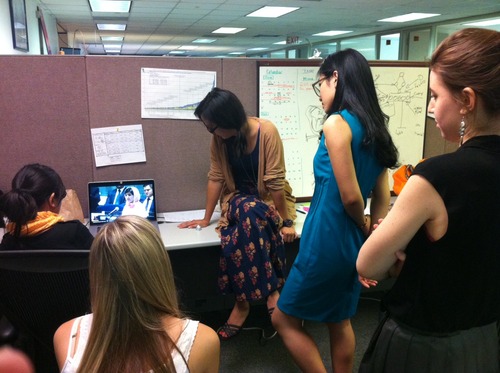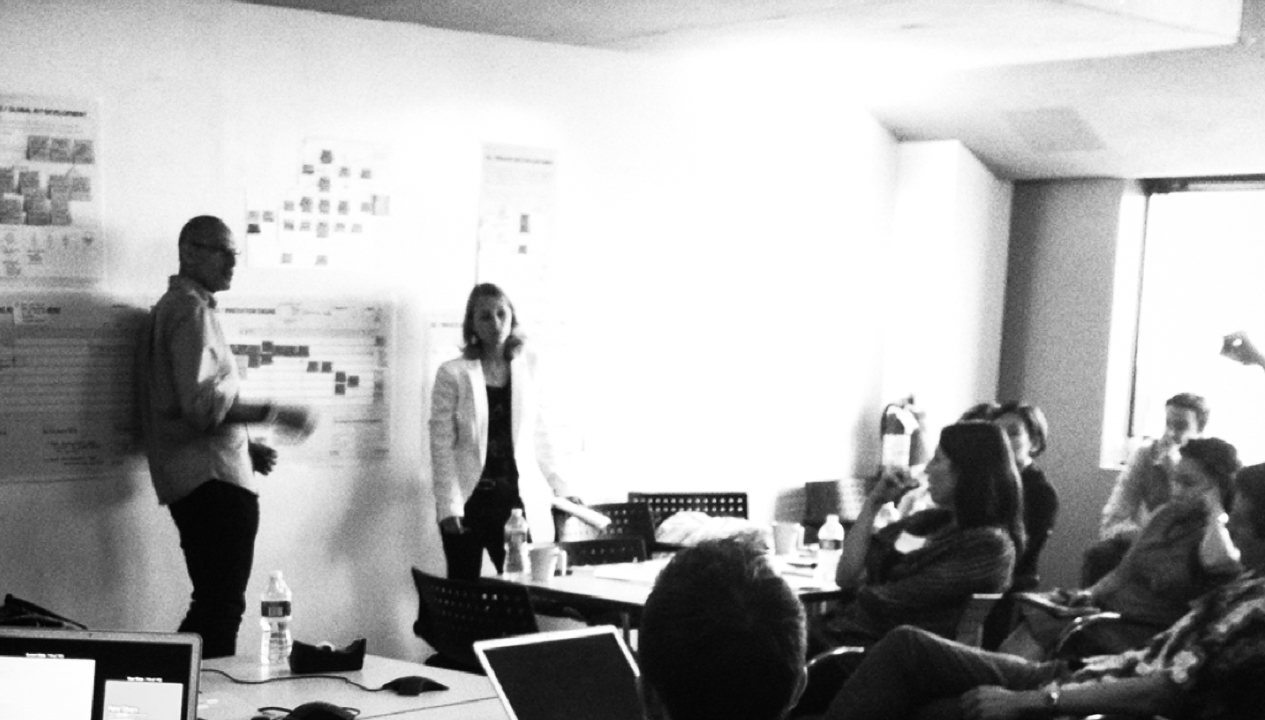The following blog post was written by Designmatters Fellow Divya Gaitonde. In this blog repost, Divya shares her experiences turning information into narratives while working with the UNICEF Innovation Unit in NYC during the Summer of 2013.

 The summer of 2013, I was a Designmatters Fellow and Media Designer at UNICEF’s Innnovation Unit, NYC. Besides having a glorious view, I got to be part of some very interesting work going on there.
The summer of 2013, I was a Designmatters Fellow and Media Designer at UNICEF’s Innnovation Unit, NYC. Besides having a glorious view, I got to be part of some very interesting work going on there.
We had a lovely view of the UN Plaza. The weather fluctuated on a weekly basis but we lucked out with great weather on “Work Outside Day” as there are plenty of parks + free wifi spots around to make a productive work session. Our space was reorganized to accommodate all of us (there were quite a few of us this summer). During our meetings we spoke of the importance of having a good work space to encourage efficiency and it has been fun watching it being coaxed into existence from a pool of suggestions and constraints.
 Prior to this summer, I had spent my time talking to people who understood what I said – all the short forms, (design and cultural) vocabulary, references and other details that you take for granted over time.
Prior to this summer, I had spent my time talking to people who understood what I said – all the short forms, (design and cultural) vocabulary, references and other details that you take for granted over time.
Over the summer, I was part of a team that had a mix of designers and researchers. I reported to people who were my mentors, bosses and clients simultaneously, and I had the opportunity to collaborate with different people with different priorities. This understandably involved a lot of interaction.
As a (media/interaction) designer, one of first things you learn to do is to define your user. You study behaviors, and understand motivations and demystify being human – that was its allure. To someone who finds people baffling and unpredictable, it has a logic, and sense of (possibly false) control which is reassuring.
 Interactions, meetings and workshops over the summer made me realize that this methodology, and language can make design seem (intentionally or unintentionally) complicated. Design is hard work and explaining it simply does not and should not reduce its value.
Interactions, meetings and workshops over the summer made me realize that this methodology, and language can make design seem (intentionally or unintentionally) complicated. Design is hard work and explaining it simply does not and should not reduce its value.
At the end of every week, the team would meet for “Fail Friday.” We each take turns in talking (briefly) of out (work related) success, confusion and failure for the week, and others chime in with relevant suggestion / acknowledgment.
During my summer at UNICEF I learned that the language you use during an introduction or presentation must change based on who you are talking to. Though seemingly obvious, it takes awareness, and practice to stop from slipping back into the context and language you are most comfortable with. That, and to be an adequately good listener.
Divya is currently a Media Design Practices MFA student. You can learn more about her work with UNICEF here, or download her UNICEF Fellowship Document here.
.
